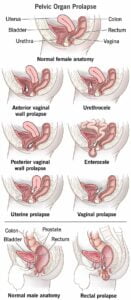Alcohol Use Disorder: An Overview
Alcohol Use Disorder (AUD) is characterized by a problematic pattern of alcohol consumption, leading to difficulty in controlling drinking habits, a fixation on alcohol, and persistent consumption despite the occurrence of related issues. This condition may necessitate increased alcohol intake to achieve previous effects or result in withdrawal symptoms upon abrupt cessation or reduction of alcohol use. AUD is sometimes referred to as alcoholism.
Unhealthy Alcohol Consumption encompasses any drinking behavior that jeopardizes one’s health or safety or leads to other alcohol-induced complications. This category also includes binge drinking, defined as a male consuming five or more alcoholic beverages within two hours, or a female consuming at least four, posing substantial health and safety hazards.
Should your drinking habits consistently cause considerable distress and impair daily functioning, it is probable that you are experiencing AUD. The severity of AUD can vary from mild to severe, and even mild cases can progress to serious complications, making early intervention crucial.
Symptoms of Alcohol Use Disorder The severity of AUD, ranging from mild to severe, is determined by the number of symptoms present. These symptoms may encompass:
- An inability to moderate alcohol consumption
- A desire to reduce drinking or unsuccessful efforts to do so
- Excessive time spent on activities related to alcohol consumption or recovery from its use
- A strong compulsion or urge to drink alcohol
- Repeated alcohol use leading to failure in meeting major responsibilities at work, school, or home
- Persistent alcohol consumption despite awareness of its detrimental effects on physical, social, occupational, or interpersonal aspects
- Sacrificing social, occupational, or recreational activities in favor of alcohol use
- Engaging in alcohol use in potentially hazardous situations, such as driving or swimming
- Developing a tolerance to alcohol, necessitating more to achieve the desired effect, or experiencing diminished effects with the same quantity
- Withdrawal symptoms, like nausea, sweating, and shaking, when not drinking, or consuming alcohol to avoid these symptoms
AUD may involve episodes of alcohol intoxication and withdrawal symptoms.
Alcohol Intoxication and Withdrawal Alcohol intoxication occurs as blood alcohol levels rise, with higher concentrations increasing the likelihood of adverse effects. Intoxication can lead to behavioral issues and mental alterations, including inappropriate conduct, mood instability, impaired judgment, slurred speech, attention or memory difficulties, and coordination problems. “Blackouts,” or memory lapses of events, can also occur. Extremely high blood alcohol levels may result in coma, permanent brain damage, or death.
Alcohol withdrawal can manifest when heavy and prolonged alcohol use is abruptly reduced or stopped. It may arise within several hours to 4-5 days later and is characterized by symptoms such as sweating, rapid heartbeat, hand tremors, sleep disturbances, nausea, vomiting, hallucinations, restlessness, agitation, anxiety, and in some cases, seizures. These symptoms can be intense enough to hinder work or social functioning.
Defining One Standard Drink According to the National Institute on Alcohol Abuse and Alcoholism, one standard drink is equivalent to:
- 12 ounces (355 milliliters) of regular beer (~5% alcohol)
- 8 to 9 ounces (237 to 266 milliliters) of malt liquor (~7% alcohol)
- 5 ounces (148 milliliters) of wine (~12% alcohol)
- 1.5 ounces (44 milliliters) of distilled spirits or hard liquor (~40% alcohol)
Seeking Medical Advice for Alcohol Use
If you suspect that your alcohol consumption is excessive or causing issues, or if your family expresses concern about your drinking habits, it is advisable to consult with your healthcare provider. Additional resources include speaking with a mental health professional or joining support groups like Alcoholics Anonymous or other self-help organizations.
Denial can often mask the recognition of a drinking problem. It’s important to heed the concerns of relatives, friends, or colleagues who suggest evaluating your drinking patterns or seeking assistance. Engaging with individuals who have overcome their own drinking challenges can be beneficial.
Supporting a Loved One in Need Many individuals with alcohol use disorder may delay seeking help due to a lack of acknowledgment of their condition. Interventions by family and friends can aid in the realization and acceptance of the need for professional assistance. If you are worried about someone’s excessive drinking, seek guidance from an expert in alcohol treatment on how to address the issue.
Underlying Causes of Alcohol Use Disorder A combination of genetic, psychological, social, and environmental factors can influence the effects of alcohol consumption on one’s body and behavior. Some individuals may experience a more potent impact from drinking, potentially leading to alcohol use disorder.
Chronic excessive drinking can alter the brain’s normal functioning, particularly in areas related to pleasure, judgment, and behavioral control, leading to alcohol cravings to either enhance positive feelings or mitigate negative ones.
Risk Factors for Developing Alcohol Use Disorder Alcohol use can start in the teenage years, but alcohol use disorder more commonly develops in the 20s and 30s, although it can begin at any age.
The risk factors for developing alcohol use disorder include:
- Consistent Drinking Over Time: Regular excessive drinking or frequent binge drinking can result in alcohol-related issues or alcohol use disorder.
- Early Initiation: Starting to drink at a young age, particularly binge drinking, increases the risk of developing alcohol use disorder.
- Family History: A family history of alcohol problems, potentially linked to genetic factors, heightens the risk of alcohol use disorder.
- Mental Health Conditions: Individuals with mental health disorders such as anxiety, depression, schizophrenia, or bipolar disorder are more prone to alcohol or substance-related problems.
- Traumatic Experiences: A history of emotional or other forms of trauma elevates the risk of alcohol use disorder.
- Post-Bariatric Surgery: Research indicates that bariatric surgery recipients may have an increased risk of alcohol use disorder or relapse after recovery.
- Social and Cultural Influences: Regular exposure to friends or partners who drink, as well as media portrayals of drinking, can increase the likelihood of alcohol use disorder. For adolescents, the influence of parents, peers, and role models is significant in shaping drinking behaviors and associated risks.
Complications of Alcohol Use
Alcohol initially depresses the central nervous system, which might seem like an energy boost. However, continued consumption leads to drowsiness and impaired control.
Excessive alcohol intake impairs speech, muscle coordination, and critical brain functions. Severe binge drinking can result in coma or death, especially when combined with certain medications.
Safety Hazards Heavy drinking compromises judgment and lowers inhibitions, leading to:
- Accidents: Increased risk of motor vehicle accidents and injuries like drowning.
- Relationship Issues: Strained personal relationships.
- Work and School: Poor performance and attendance.
- Violence: Higher likelihood of committing or falling victim to violent acts.
- Legal and Financial Troubles: Legal issues, employment problems, and financial instability.
- Substance Problems: Complications with other substance use.
- Sexual Risks: Engaging in unprotected sex, sexual abuse, or date rape.
- Suicide: Elevated risk of suicide attempts or completion.
Health Consequences Chronic alcohol abuse can lead to various health issues, including:
- Liver Disease: Conditions like fatty liver, alcoholic hepatitis, and cirrhosis.
- Digestive Issues: Gastritis, ulcers, and nutrient absorption problems.
- Cardiac Concerns: High blood pressure, heart enlargement, failure, stroke, and arrhythmias.
- Diabetes Complications: Interference with glucose release and hypoglycemia risks.
- Sexual and Reproductive Health: Erectile dysfunction in men and menstrual disruptions in women.
- Vision Impairment: Nystagmus, muscle weakness, and thiamin deficiency-related issues.
- Birth Defects: Miscarriage and fetal alcohol spectrum disorders (FASDs).
- Bone Health: Osteoporosis, fractures, and bone marrow damage.
- Neurological Issues: Numbness, pain, cognitive disorders, dementia, and memory loss.
- Immune Function: Weakened resistance to diseases, particularly pneumonia.
- Cancer Risk: Increased likelihood of developing cancers, such as those of the mouth, throat, liver, esophagus, colon, and breast.
- Drug Interactions: Adverse reactions when alcohol is mixed with certain medications.
Interactions Between Medications and Alcohol
Alcohol can interact with certain medications, amplifying its harmful effects. Consuming alcohol while on these medications may compromise their efficacy or render them hazardous.
Preventing Alcohol-Related Issues in Adolescents
Proactive measures can mitigate the risk of alcohol-related problems in teenagers. If you’re parenting a teen, watch for these warning signs of alcohol misuse:
- A waning interest in previously enjoyed activities, hobbies, and personal grooming
- Reddened eyes, unclear speech, coordination difficulties, and memory issues
- Relationship shifts, such as associating with a different peer group
- Academic decline and school-related challenges
- Erratic mood swings and defensive attitudes
To discourage alcohol use in teenagers:
- Model responsible alcohol behavior yourself.
- Engage in open dialogue, dedicate quality time, and actively participate in your teen’s life.
- Clearly communicate your expectations and the repercussions for not adhering to established guidelines.


